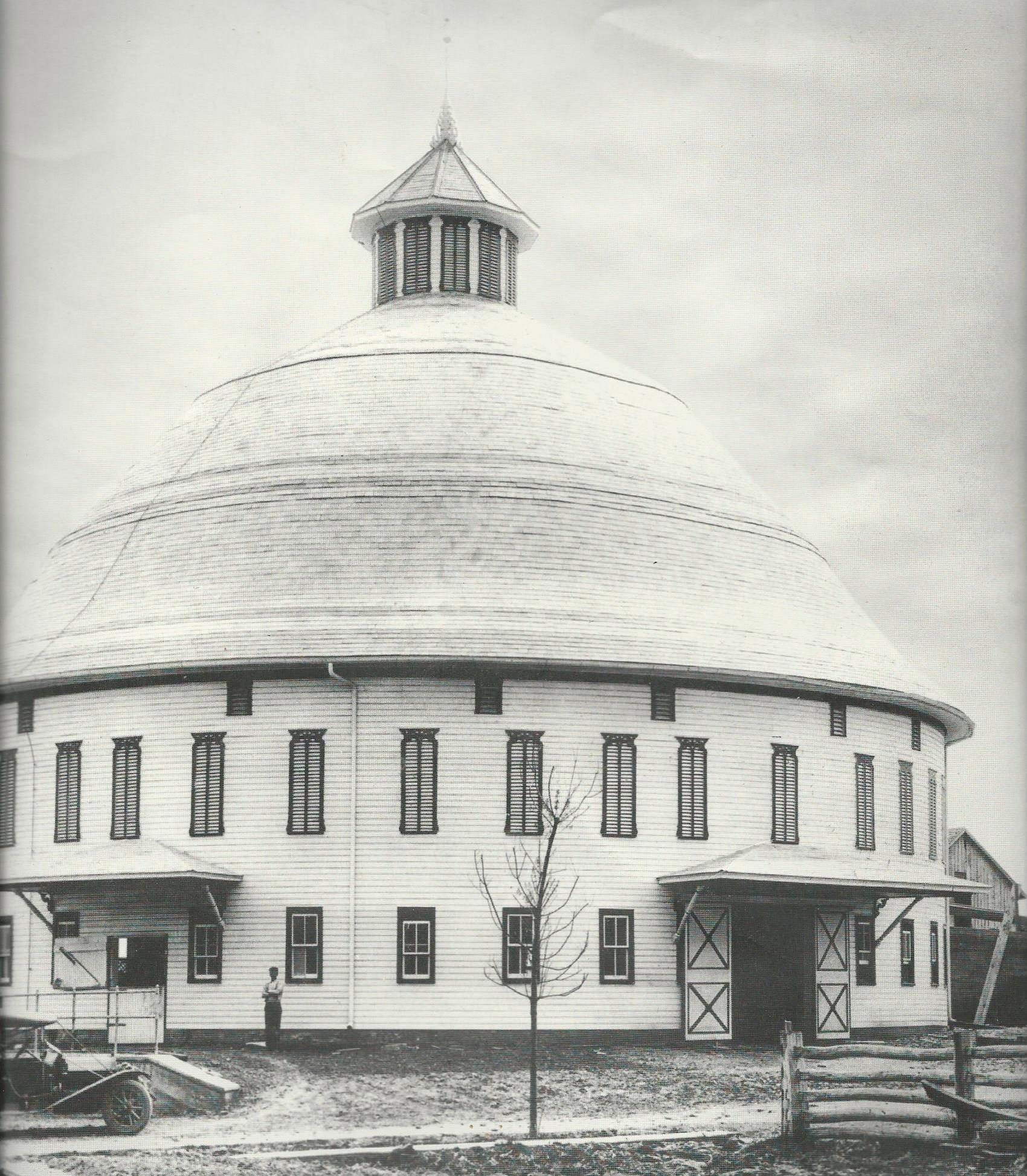
History
Only a handful of round barns survive today, and so few remain that they are considered "an endangered species" registered with the National Trust for Historic Preservation. Most round barns were built between 1900 and 1920, primarily in the Northeast and then the Midwest. The Shakers, who built the first round barn, believed the circle to be the most perfect shape (the devil couldn't trap you in the corner).
There are two distinct shapes of round barns: the polygonal barn, which consists of five or more equal sides and the truly round barn, which is also known as the "barrel barn". Our example of the barrel barn is still very much alive and well right outside Gettysburg, Pennsylvania, as one of the area's special landmarks. The Historic Round Barn, a spectacular structure, was built in 1914 by the Noah Sheely family.
Having lost there conventional barn to fire, the Sheelys needed a new barn. As the family was well-known at the time for being innovative, it followed that son Daniel, who had seen a round barn near Hershey, Pennsylvania, convinced his father and brother that a round barn is what they needed. They wrote to the Illinois Agriculture Experiment Station for information and hired an architect, Morris Rhodes, from Chambersburg, Pennsylvania to do the design.
Construction of the Round Barn began in May of 1914 with the building of the central Gurnsey Hollow Tile silo which was completed by Felix Fowler of Gettysburg. Within a little over a week after the silo was up the walls for the lower floor of the barn had been completed and the local community was beginning to be intrigued with scores of people flocking to the build site every Sunday. On one Sunday it was reported that nearly 300 people came to admire the craftsmanship. By the end of July the Round Barn was under roof and ready for the completion of inside work. By November of 1914 the Round Barn was complete and ready to house animals and feed.
It is an awesome sight to stand on the top floor of the barn and gaze up at the incredible spoked-skeletal structure of the roof. What is even more amazing is realizing that when the barn was built there were no high-tech, high-powered machines -- just ingenuity and manpower. In fact, the builder, John Fritz of nearby Cashtown, one of Adams County's best builders, armed only with his trusty saw, axe, and square, bicycled the five miles from his home each morning to work on the round barn construction project. Mr. Fritz was assisted by Bob Mickley, a widely known "mechanic" in addition to the construction crew.
This was no ordinary "barn raising"! Two hundred and fifty barrels of cement were poured to form the foundation and first floor. Large hemlocks, chestnuts, oaks, and pines were felled on the farms woodlands and sawed on the farm's sawmill. The logs were then hauled by mule-drawn wagons over the mountain to Chambersburg where they were finished before returning to the farm.
The circumference of the barn is 282 feet, with a diameter of nearly 90 feet. As was characteristic of round barns, the barn was constructed around a central silo measuring 60 feet high and 12 feet wide, with storage capacity of 145 tons of silage. The silo acts as the "hub" of a wheel, with 14 girder "spokes" that form the interior structure and support for the second floor which contains 12,000 feet of wood planks. All but one of the "spokes" are single lengths of wood -- each nearly 37 feet long!! The barn as it was originally constructed could house 90 head of horses and cattle. But, to ensure plenty of working space only 66 stalls were built, 50 built with steel stanchions for head of cattle and about 16 stalls equipped for mules or horses.